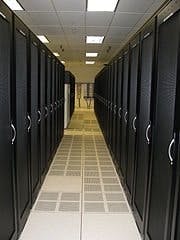Credit: Robert.Harker
by Rona Newmark, The Green Grid
In the remaining weeks of the current session of the U.S. Congress, the Senate has the chance to advance bipartisan legislation that strives to combine both business and sustainability objectives. In seeking to boost energy efficiency while cutting costs within the federal government, the Energy Savings and Industrial Competitiveness Act of 2014, S. 1261, proposes several innovative measures specific to data centers that warrant close examination.
Encouraging energy efficiency through legislation will help take advantage of well-known tools and best practices that, for multiple reasons, have yet to be deployed on a broad basis. The business and sustainability benefits from deploying these established management practices are there for the taking, making this an especially important opportunity given the central role that information technology and data centers play in advancing our nation’s economic and environmental health.
Indeed, data centers serve as the very backbone of the U.S. economy, enabling the private sector, government agencies, and consumers to operate and conduct business online. Without data centers, the Information Age grinds to a halt, and the information and communications technology (ICT) industry cannot continue evolving.
The growth of ICT, of course, has led to commensurate growth of data center capacity. According to the U.S. Environmental Protection Agency (EPA), data centers consumed between 1.7 percent and 2.2 percent of the total electricity used in the United States in 2010. The EPA has reported that U.S. data center electricity use nearly doubled between 2000 and 2005, and it increased by approximately 36 percent between 2005 and 2010. The EPA further claims that data center energy consumption will continue to grow at a rate of more than 9 percent per year through 2020, from a base of 200 trillion end-use British thermal units (BTUs) in 2008 to 600 trillion end-use BTUs in 2020. To put this in perspective, this is the equivalent of going from about 1.5 billion gallons of jet fuel consumed, to about 4.7 billion gallons consumed.
In drafting S. 1261, Sens. Mark Udall (D-Colo.) and Robert Risch (R-Ind.) offer several steps to measure and reduce energy consumption in federal data centers. Introduced as the Senate companion to the ICT industry-championed H.R. 540 – introduced by Reps. Anna Eshoo (D-Calif.) and Mike Rogers (R-Mich.), and passed by the House on March 5, 2014 by a vote of 375-36 – S. 1261 attempts a bipartisan approach to this challenge.
While focusing the executive branch on improving energy efficiency and reducing energy costs across the federal government, S. 1261 places particular emphasis on data centers. Similar to H.R. 540, S. 1261 would require the federal Office of Management and Budget to collaborate with each federal agency to create a strategy for the maintenance, purchase, and use of energy-efficient and energy-saving ICT best practices.
Examples of these best practices include installing advanced metering infrastructure, applying efficient data center strategies, improving IT asset-utilization levels, implementing energy-management plans, and deploying secure telework and travel substitution tools. S. 1261 emphasizes energy efficiency of federal data centers, including measures that will lay the groundwork for private-sector improvements in data center energy efficiency. An old adage warns that “you can’t manage what you don’t measure.” The Green Grid has seen this truth in establishing the Power Usage Effectiveness (PUE) metric, which IT organizations have used to show the change in data center energy efficiency activities.
Both S. 1261 and H.R. 540 would also require the EPA and the U.S. Department of Energy (DOE) to undertake the following steps toward enhancing energy efficiency:
- Update the 2007 Report to Congress on Server and Data Center Energy Efficiency to include new technology advancements.
- Codify the existing Data Center Energy Practitioner (DCEP) Program at the DOE, which trains practitioners to inspect and evaluate the energy efficiency of data centers.
Establish an open data initiative for the purpose of making data about federal data center energy usage publicly available in a way that helps empower further data center innovation while protecting national security interests.
Require the DOE, in close collaboration with the private sector, to develop a new metric to measure overall energy efficiency of data centers and to work toward harmonizing international metrics for data center energy efficiency.
The bipartisan provisions contained in S. 1261 can help improve the cost and energy efficiency of federal data centers, and lay the foundation for broader adoption of energy-saving practices and technology in the private sector. At a time when data centers are increasingly recognized as the foundation of our economy, understanding the effects of such a proposal ensures that the ICT industry continues evolving in step with sustainability.
Newmark is a member of the Board of Directors and Treasurer of The Green Grid, a non-profit, open industry consortium of end users, policy makers, technology providers, facility architects, and utility companies that works to drive effective and accountable resource efficiency across the entire ICT ecosystem. She is also vice president, Intelligent Energy Efficiency Strategy, Office of Sustainability, at EMC Corporation. This article originally appeared in “The Hill.”







